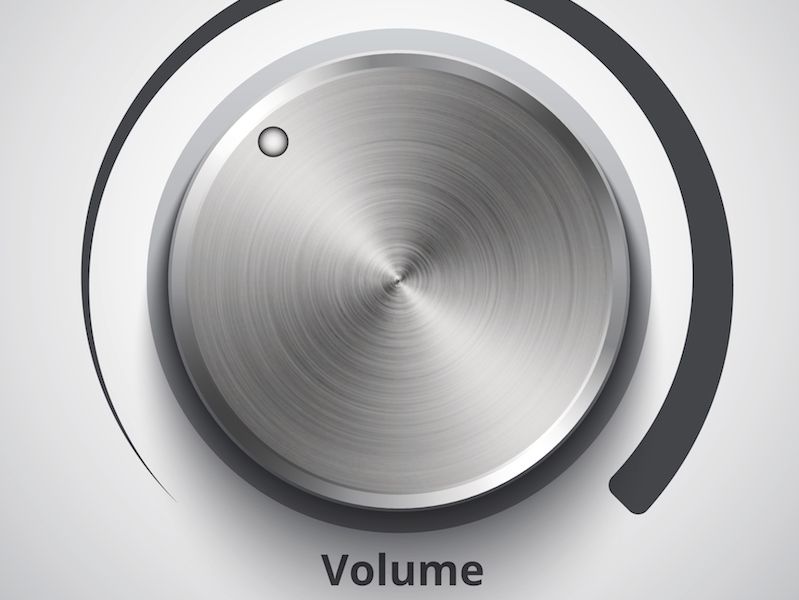
Have you ever seen the “Beware of Sharks” sign when you’re at the ocean? It’s not hard to realize that you should never ignore a warning like that. You might even rethink swimming at all with a sign like that (if the warning is written in big red letters that’s especially true). But people don’t tend to pay attention to warnings about their hearing in the same way for some reason.
Recent studies have found that millions of individuals disregard warning signs regarding their hearing (this research exclusively considered populations in the United Kingdom, but there’s little doubt the concern is more global than that). Part of the issue is knowledge. Being afraid of sharks is rather instinctive. But the majority of people don’t have an overt fear of loud noises. And how do you recognize how loud is too loud?
We’re Surrounded by Hazardously Loud Noises
It’s not only the machine shop floor or rock concert that are dangerous to your ears (not to downplay the hearing hazards of these scenarios). Many common sounds can be dangerous. That’s because the duration of sound is as harmful as the volume. Even low-level noises, such as dense city traffic, can be harmful to your hearing when experienced for more than a couple of hours.
Read on to find out when sound gets too loud:
- 30 dB: Normal conversation would be at this sound level. At this level, there won’t be any limit to how long you can confidently be exposed.
- 80 – 85 dB: An air conditioner, heavy traffic, and a lawnmower are at this volume. After around two hours this level of sound becomes harmful.
- 90 – 95 dB: A motorcycle is a practical example of this sound level. This amount of exposure becomes hazardous in as little as 50 minutes of exposure.
- 100 dB: An oncoming subway train or a mid-sized sports event are at this sound level (depending on the city, of course). This volume can get hazardous after 15 minutes of exposure.
- 110 dB: Have you ever cranked your Spotify music up to max volume? On most smartphones, that’s right around this level. This level of exposure is dangerous after only 5 minutes of exposure.
- 120 dB and over: Anything over 120 dB (think loud rock concerts or very large sports events) can produce instant injury and pain in your ears.
What Does 85 dB Sound Like?
Generally, you’re in the danger zone when you’re dealing with any sound 85 dB or above. The issue is that it’s not always obvious just how loud 85 dB is. A shark is a tangible thing but sound is not so tangible.
And hearing cautions commonly go ignored for this reason when the sound environment isn’t loud enough to cause pain, this is specifically true. Here are a couple of potential solutions:
- Sufficient training and signage: This especially pertains to the workplace. The significant dangers of hearing loss can be reinforced by training and sufficient signage (and the advantages of protecting your hearing). In addition, just how loud your workplace is, can be made clear by signage. Training can help employees know when hearing protection is required or recommended.
- Get an app: Your hearing can’t be immediately safeguarded with an app. But there are a few sound level metering apps. Injury to your ears can occur without you realizing it because it’s hard to know just how loud 85 dB feels. The solution, then, is to have this app working and monitor the sound levels near you. This can help you establish a sense for when you’re entering the “danger zone” (and you will also recognize right away when things are getting too noisy).
When in Doubt: Protect
Apps and signage aren’t a foolproof answer. So make the effort to safeguard your hearing if you are in doubt. Noise damage, over a long enough period of time, can bring about hearing loss. And nowadays, it’s never been easier to damage your ears (all you need to do is turn your headphone volume up a little too high).
If you’re listening to headphones all day, you should not raise the volume past the half way. You need noise cancellation headphones if you are always turning up the volume to block out background noise.
So when volume becomes too loud, it’s important to accept it. Increasing your own understanding and recognition is the answer if you want to do that. Protecting your ears, using ear protection, or reducing your exposure, is pretty simple. That starts with a little recognition of when you need to do it.
Nowadays that should also be easier. Especially now that you understand what to be aware of.
Think you might have hearing loss? Make an appointment.
